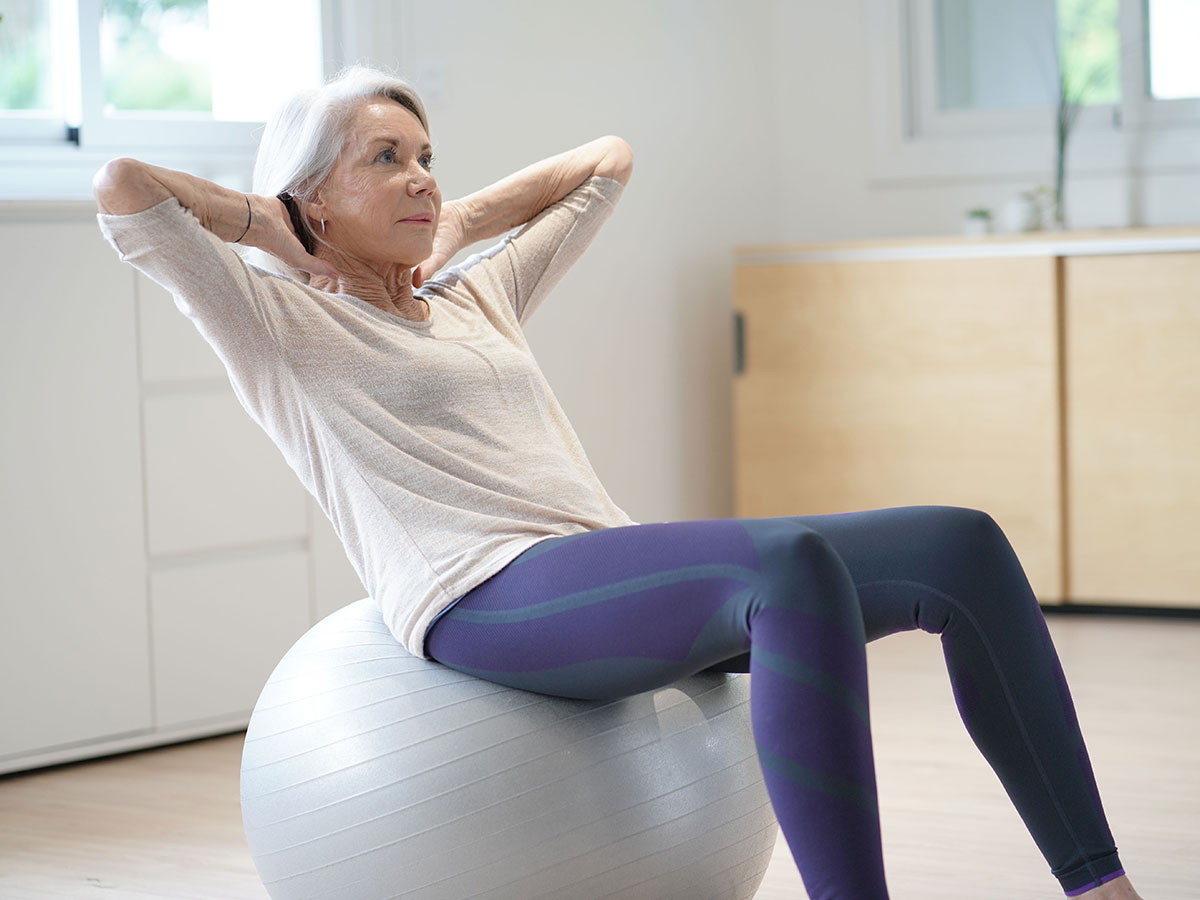

Here at Allsports Physiotherapy, we regularly see people with urinary incontinence as a result of the pelvic floor muscles not working as well as they should.
Pelvic floor exercises are a simple and important part of improving the function of these muscles, yet many patients are surprised to learn of the importance of their pelvic floor and the associated exercises. With up to 70% of Australians not seeking advice and treatment for problems such as incontinence, our physios have given you the low down of the importance of pelvic floor exercises and how they could help you.
What Is The Pelvic Floor?
Your pelvic floor is a bowl-like group of muscles that work together to keep all of your pelvic organs supported, functioning well and help to maintain continence. The pelvic organs include the bladder, bowel and their contents in both men and women, and additionally the uterus and vagina in women.
Think of all the movement you do throughout the day – sitting, standing, lying down, lifting, going up and down stairs – it’s your pelvic floor that keeps your pelvic organs supported and working as they should, without feeling any heaviness or internal movement.
What Things Can Change How The Pelvic Floor Muscles are Working?
The function of your pelvic floor muscles can change if you:
- Go through pregnancy
- Suffer chronic constipation
- Have a chronic cough or respiratory problem
- Undertake repeated heavy lifting
- Experience an increase in body weight
- Perform regular high impact exercise
- Chronically underwork or overwork the pelvic floor
- Have trauma to the pelvic region
Why Are Pelvic Floor Exercises Important?
When the pelvic floor muscles are not working optimally, you may experience any or all of the following symptoms:
- Urinary incontinence and leakage during coughing, sneezing, laughing or jumping
- The need to regularly empty your bladder or bowels during physical activity
- Faecal incontinence
- Uncomfortable sensations like something your pelvic organs are dragging or bulging, like they’re not being supported
- Pelvic pain or spasms
- Accidental passing of wind
- Sexual discomfort
Consequences of pelvic floor muscle dysfunction are more common than people realise. Incontinence from pelvic floor dysfunction affects 1 in 3 Australian women and 1 in 10 Australian men, with 50% of these people below the age of 50. Pelvic floor exercises
Simple At-home Exercises For Your Pelvic Floor
Everyone can benefit from pelvic floor exercises, from women in the postpartum period to men that have undergone prostate operations, to anyone experiencing any form of incontinence. Remembering that we first described the pelvic floor as a bowl-like group of muscles, activating and working the pelvic floor moves this bowl upwards and forwards as you squeeze the muscles.
Your women’s and men’s pelvic health physio will prescribe an individual pelvic floor exercise plan based on the results of your assessment so that it is tailored to your specific needs, but here is a quick, general pelvic floor exercise you can try right now.
While sitting or standing, squeeze and draw in like you’re stopping the flow of urine. Don’t try this when you’re using the toilet – just mimic the action. Keep this squeeze and contraction for 3-5 seconds. Release – you should feel your pelvic floor notably relaxing, letting go and lowering. Rest for a few seconds, then repeat up to ten times or until you feel your pelvic floor muscles fatigue.
We always recommend consulting with your physio before commencing pelvic floor exercises to undertake a full assessment to work out what factors might be contributing to your symptoms and to ensure the program is tailored to your specific needs. A number of our clinics have women’s health
Who Shouldn’t Do Pelvic Floor Exercises?
If you’re experiencing pelvic pain, or feel a tightness in your pelvis or pelvic organs that at times may feel like you’re sitting on a golf ball, it’s important to see your physio first before commencing pelvic floor exercises. They’ll help work out the best plan for you which may in fact involve relaxation exercises if your pelvic floor muscles are overactive.
Ready To Regain Control Of Your Pelvic Floor?
By doing the right exercises with the right progression, and working alongside an experienced physiotherapist that understands pelvic floor health, you can regain optimal pelvic floor function. Your physiotherapist will also ensure that you don’t have any underlying or additional problems that may delay or prevent your progress and recovery.
Book in with your local Allsports Physiotherapy team online here or call the clinics near you here to find your closest pelvic floor physio.
References
[1] https://www.continence.org.au/about-us/our-work/key-statistics-incontinence
[2] http://www.pelvicfloorfirst.org.au/
[3] https://www.continence.org.au/about-us/our-work/key-statistics-incontinence
[4] https://www.thewomens.org.au/images/uploads/fact-sheets/Pelvic-floor-exercises-210319.pdf
